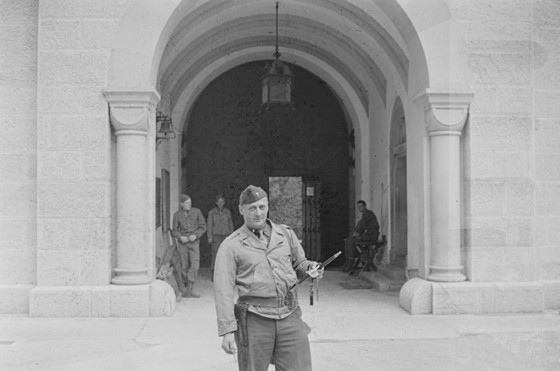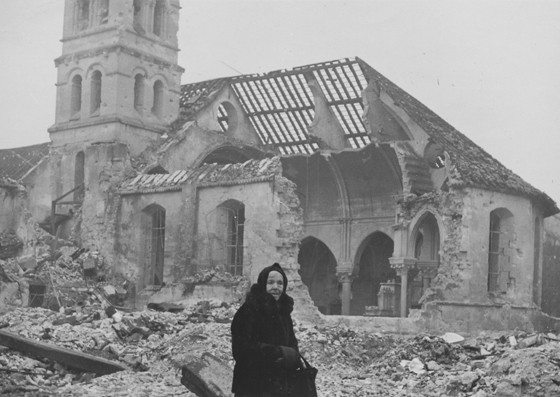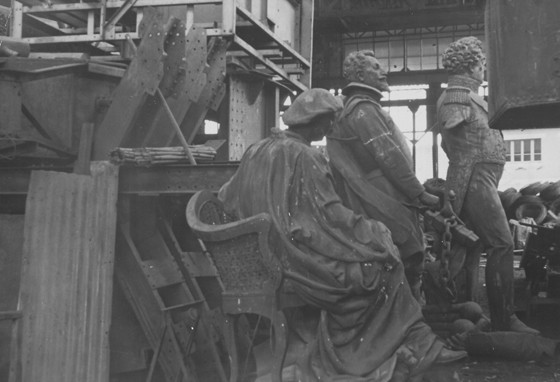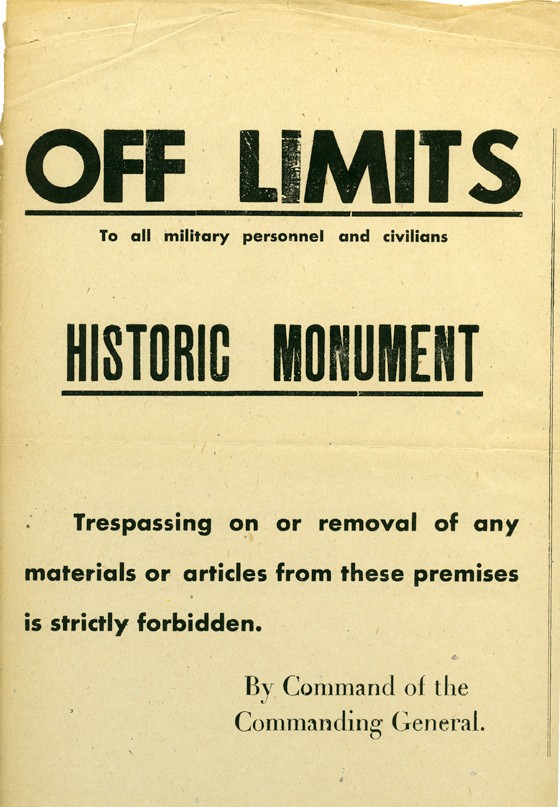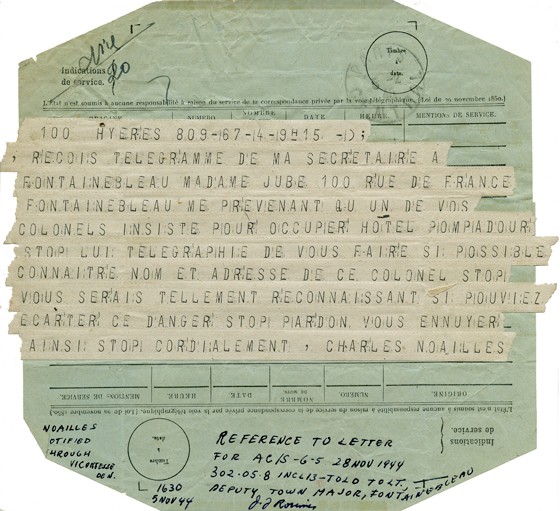The Monuments Men
and the National Gallery of Art
III. D-Day and France
Less than two weeks before D-Day, General Dwight D. Eisenhower issued his now famous order to all commanders stating their responsibility to save historical monuments and cultural centers. A small number of monuments officers moved through France with the advancing armies. Captain James J. Rorimer, who had left a career at the Metropolitan Museum of Art in New York to join the army, was among the monuments officers active in France. Rorimer later served with the MFAA in Germany, ultimately becoming chief of the MFAA section of the Seventh US Army, Western Military District.
Captain James Rorimer, 1945. James Rorimer Papers
Church at Deuil, Seine-et-Oise, 1944. James Rorimer Papers
Monuments officers visited damaged churches and cultural sites, took photographs, and made careful records of destruction. Rorimer later observed that this church at Deuil was one of the few buildings near Paris damaged by German V-2 bombs.
Foundry at Blanc Mesnil, 1944. James Rorimer Papers
During the Nazi occupation of France, statues, church bells, and other metal objects were taken to this foundry to be melted for armaments. MFAA officers discovered these figures there and restored them to their owners.
The Roberts Commission served as a channel for lists of protected monuments that were to be off-limits. Such signs were posted at many churches, parks, chateaus, and historic buildings. James Rorimer Papers
Mont Saint-Michel, 1944. James Rorimer Papers
When Captain Rorimer arrived at Mont Saint-Michel, he discovered soldiers on leave carelessly driving through narrow streets despite the off-limits signs seen here. He expressed his concern in written reports and succeeded in enforcing a policy that improved security.
Telegram to James Rorimer, November 1944. James Rorimer Papers
Despite orders to protect monuments, military units occasionally were billeted in historically significant buildings. MFAA officers did everything to prevent such assignments and fielded complaints from concerned French citizens and property owners. This telegram from Charles de Noailles alerts Captain Rorimer of a threat to Madame de Pompadour’s house at Fontainebleau
Next > IV. Loot and Treasure
